There are a few spare gun parts that you should always have on hand in case your gun malfunctions. Guns are machines, and as a result they can and will have mechanical failures. You, as the operator of the machine, should be able to fix it. Having the parts on hand will save you time and money.
Therefore, let’s consider what the most common failure points are and what parts are a good idea to always have around.
We’re going to touch on the most general of parts, which are most common causes of malfunctions of most firearms, and not so much specific parts of specific guns. It won’t do most people much good to know what parts fail most often on, say, a Colt All American.
In case you’re curious, the parts most likely to fail in a Colt All American is all of them, which was one of the things that pistol was known for. As for your pistols, a good thing to start with is . . .
Recoil Springs
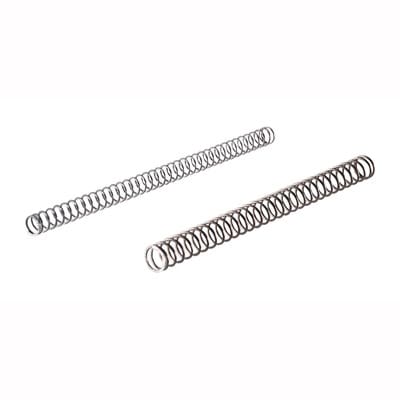
The recoil spring is the heart of any semi-automatic firearm. The bolt of an AR-15 or semi-automatic shotgun, and the slide of a semi-automatic pistol is returned to battery by means of the recoil spring compressing and releasing.
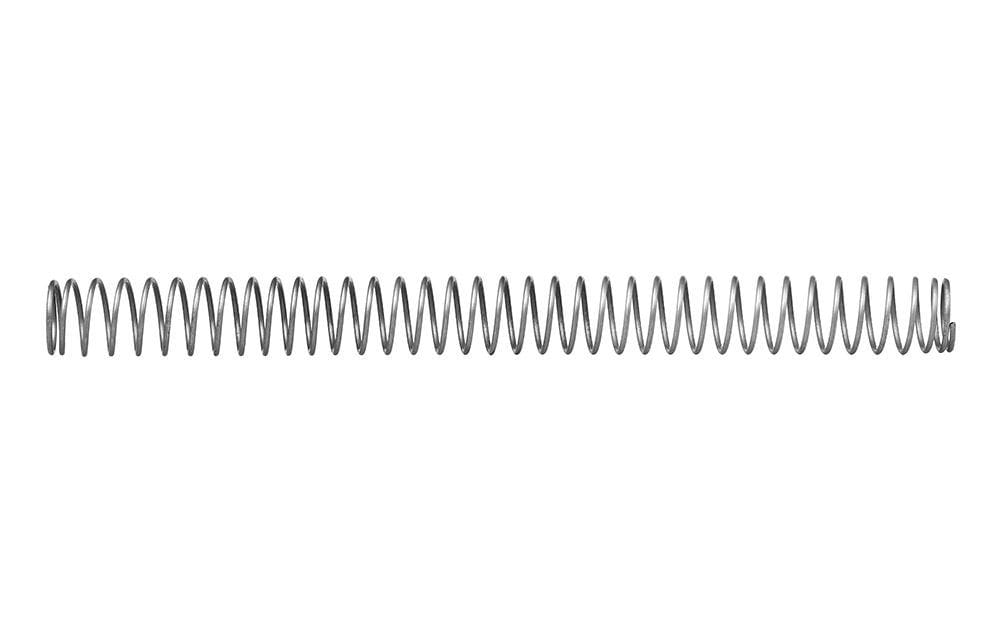
If the spring is weakened, function will become compromised. Therefore, this is one part that you should always have one or two of in reserve. They’re inexpensive and indispensable.
Magazine Springs
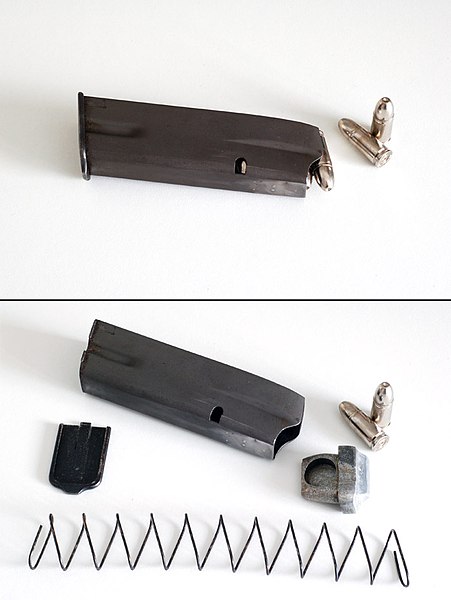
Speaking of springs, most semi-automatic firearms also have a spring involved in their feeding system. The tube magazine of a shotgun feeds shells by means of a compressed spring in the magazine tube. Ditto for lever-action rifles. Bolt-action rifles are fed via a leaf spring in the internal box magazine, and semi-automatic rifles are fed by a box magazine as are semi-automatic pistols.

When these springs begin to fail or lose integrity, that will compromise feeding and reliability. Therefore it’s a good idea to have a few of these on hand.
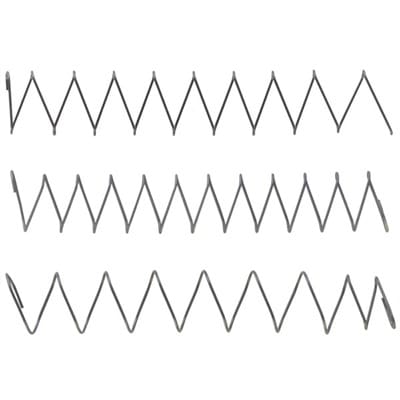
In the case of detachable magazines, for most shooters, this often takes the form of other magazines. Rather than keeping spare magazine parts, they just buy extra magazines.
Purchasing some higher-quality magazines to run your gun with. After you’ve purchased a decent number – say four or more – then start buying additional magazine springs. They’re cheaper than new magazines, unless you feel like more is a good idea.
Which, of course, it always is.
Extractors

Another good part to always have on hand is the ejector/extractor. That’s a common failure point of many firearms as this part can bend or otherwise deform after sufficient use. Obviously, you need reliable feeding and extraction, so it’s just a good part to have around in case it fails.
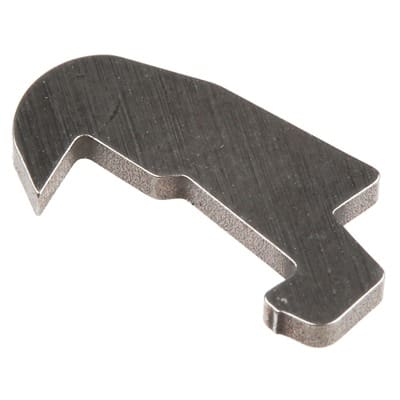
Oh, and one more thing . . .
A Good Lubricant
It isn’t a part per se, but not enough of it is definitely a cause of many, many malfunctions.

Some people take great pride in how little they maintain their guns. That’s an attitude I have never really understood. Perhaps I’m on a different wavelength than people who don’t clean their guns. To my mind, you want to keep your equipment maintained and in good working order in case you really need it, but that’s just me.
Therefore, keep a bottle of cleaner/lubricant in your range bag, and at home where you clean your guns (assuming you do). RemOil, Break-Free CLP, Otis Lubricant and plenty of other brands are cheap and widely available.
No firearm platform is perfect. Make sure you study the mechanism of your weapon(s). Understand how it works and what its particular common failings are. If you know how the machine runs, you’ll be able to take care of it, and it will take care of you.
Anything else you think should be included? Sound off in the comments.

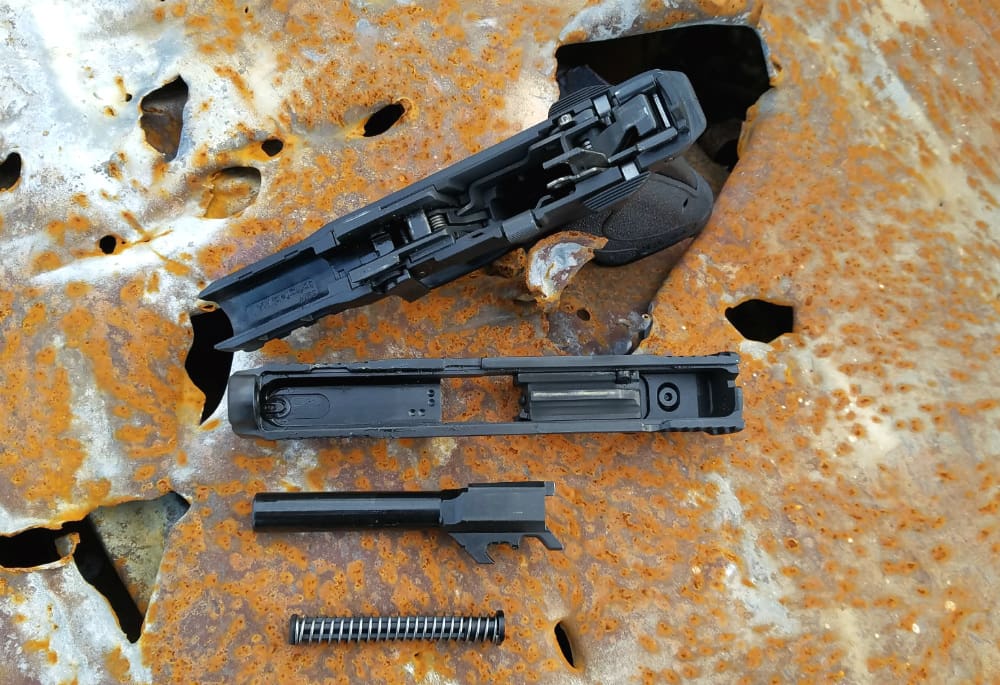



What’s the service life of an AR15 recoil spring? I bet it’s measured in tens of thousands of rounds, AKA several lifetimes for most people.
Dan, if you have an AR platform carbine you better have a spare parts bin. I’ve seen just about every part fail on an AR that can. Every spring. Every one. Broken cam pins, extractors, etc. I was issued an M-16 that would not cycle. Period. The company armorer tried everything. Finally issued me a different weapon. Of course, it malfunctioned too. Just not as often.
Yeah, those ARs are real problems. They’re never going to catch on.
Agreed, in the last 22 years the only malfunction I saw on an M16 was on burst it would shoot 2 rounds then 1 and repeat.
Eric, I never said they weren’t popular. After all, it’s about the only thing millennials are familiar with. They’re common and inexpensive. So were Yugos. I don’t base my opinion on what I’ve read or war stories. The government handed me my first AR in 1979. I gave them the last one back in 2014. Actual experience. Much of it not on a clean range and a couple of mags. Compared to other weapons systems the AR platform is shit. Even Eugene Stoner tried for something better with the AR-18 and the Stoner system. Current market value aside; honestly tell me you wouldn’t trade an AR-15 for an HK-93.
And Aaron, you must not have seen many ARs in 22 years.
Back in the day, my team captain had his AR lockup during a match. He couldn’t get it to fire during the course, so he got a DNF for the stage.
A tiny rivet head from a metal GI mag had popped off and lodged between the trigger and frame. Not an issue with newer PMags, but it taught me a valuable lesson.
Later, I became my departments armorer. I kept a tackle box full of AR parts just because.
Tom, it’s no secret that I’m a Galil fan. You want to hear about reliability? Years ago a buddy and I bought a bunch of battlefield pick-up Galil mags. We worked on those we thought could be salvaged. Threw away those that couldn’t. Some were like new. One day we went to the range with several Galils, semi and full auto, and several thousand rds of ammo for function check. Functional mags in one box. Others in another for more work. When a rifle got smoking hot we swapped out. Packing up at the end of the day I noticed a kind of grit on the receiver. And a rattle. I popped the top cover off. Seems the grit was gun powder. The rattle was a .556 round that had been beaten in half between the rim and the shoulder. The 55 grain bullet had slipped the neck. We concluded that a dent in a mag body had captured the follower relieving spring pressure on subsequent rds. The Galil never malfunctioned. That’s reliability.
“Eric, I never said they weren’t popular. After all, it’s about the only thing millennials are familiar with.”
Aw, Gadsden, the kids are familiar with Cheeze-Whiz Glocks as well!
I’m your vintage, and I could get by just fine with a well-sorted AR and a Glock…
GF. I had a whole round of 7.62×39 loose in the magazine springs of a Russian sks. The weapon loaded and fired 10 round strippers without issue. Only thing I can figure is that during breaks in the shooting our RSO’s wanted the bolts open and the mag open. I must have scooped a loose round up when I closed the mag up for the next round.
jwm, that doesn’t really suprise me. SKS and AKs are very reliable. I actually prefer the SKS to the AK. It is my representative rifle in 7.62X39. Just as reliable as an AK, but more accurate. Laid in a case of 7.62X39 in stripper clips decades ago.
Geoff, I like a Glock. Been to their LE armorer school three times. Got one laying on my nightstand with Henie night sights and a TLR light on the rails. No laser. Sorry. Too much sugar for a dime. AR? Bet your life on it if you want to. Me? No thanks.
I’ll be honest and say I have zero personal AK experience. My state banned them before I ever owned a gun. I do have SKS(s). Just finished building one from a barreled receiver and haven’t shot it yet. The other one is a Norinco. It is shockingly accurate with the right load. About 3MOA with most steel cased stuff, which compared to my ARs which are typically 4-5MOA with steel cased ammo, is pretty good. Brass cased its about 2.5MOA, but there are a couple of loads it really likes. Hornady steel match (SST) it’ll go about 1.5MOA and Wolf Mil Classic it is sub MOA at 50yds with 5 shot groups!
Now, at 100 its around 1.5, but that is as much me and my limitations with iron sights at 100yds (it does have a thinner front sight post).
I’ll grant you I do get fliers sometimes there, but what do you expect with cheap steel ammo? 1 in 3 groups being sub MOA and the rest not worse than 2MOA generally with 1 flier that is what is opening it up.
So far no failures, though I don’t think I’ve put more than 600 rounds through it.
My ARs the only failures I’ve ever had was failure to insert the mag fully on a closed bolt. There I doubt I have more than 3000 rounds of .223/5.56 through two different ARs and around 300 rounds of 6.5 Grendel through two different AR uppers (shared lower). So not exactly tens of thousands of rounds.
Both 6.5 and .223 hunting I’ve shot in temps down to about 0F with -20 wind chills and white out blizzard conditions (okay, it was only 20F during the blizzard conditions) with likely 2lbs of ice and snow caking my rifle. No failures to fire. No jams. No feed issues. I use 0W20 oil as lubricant. Only issues is that the charging handle froze and took some creative manipulation to get it loose
I would argue that the “mil-spec” weapons that you were issued were many things:
1. Already heavily used.
2. Poorly maintained.
3. Cheaply made (government contract).
I own many ARs, 1 store bought, 5 that I assembled from parts. I shoot in the neighborhood of 2000 rounds a year. I have had one failure. This failure was due to ammo, not the firearm, it was reloaded brass that over expanded and jammed in the chamber after firing.
One of such ARs I am actually on a mission to see how far it can go with out cleaning. I have not cleaned the inside of the firearm or any firing mechanism of this rifle, the only cleaning it has received in 2 years is knocking off the visible mud on the outside of the rifle. This rifle has approximately 2500 rounds through it during this torture test, it has yet to fail, nothing has broken.
Maybe you have a bad taste in your mouth because of cheap firearms maintained by 18 yo soldiers.
Or a second AR platform rifle…because honestly that old be more useful than spare parts if needed immediately.
“Would” not “old”.
CORRECTO!
SPRINGS are WEAR ITEMS.
VERY rarely do springs actually FAIL! Springs should be replaced on a regular basis depending on use and age for each weapons system considered individually. For example: My G32 recoil spring needed replacement after about 6K rounds. It still functioned perfectly, but the slide would barely stay in battery. Replaced with Lone Wolf 22# unit with SS follower. I have YET to replace a Glock magazine spring and I own 4 Glocks and a BUNCH of Glock Mags which are essentially bulletproof (pun intended).
However, EXTRACTORS will fail FIRST in just about EVERY SEMI-AUTOMATIC FIREARM, followed by firing pins or strikers, followed by various trigger parts depending on the system. THESE ARE THE IMPORTANT PARTS TO KEEP AS ‘SPARES’ NOT necessarily SPRINGS!
I follow this rule of thumb about springs:
If the old spring, compared to a new spring, is 10% or more shorter, I replace the spring.
Many quality springs last a long, long time. I’ve got Mausers and 1903’s with firing pin springs that are over 100 years old. They still work.
I don’t worry about spare parts. I just buy more firearms. As any Gunaholic will tell you. 1 is to many and 100 is not enough. Same can be said about ammo. Just insert cases in place of firearm. Keep Your Powder Dry.
Next article, “Spare Guns You Should Always Have On Hand”.
“I don’t worry about spare parts. I just buy more firearms.” I, too, subscribe to that philosophy. Multiple choices to carry, to plink with, to hunt various sized critters 4 and 2-legged, shotguns, you name it.
This is way easier than fixing things – especially for those of us who can barely manage to change a lightbulb without consulting YouTube.
good lubricant is a cause of many, many malfunctions? i’ll stick with my blend.
Hot sauce and a spicy BBQ sauce? 🙂
The replacement parts I keep on hand for my gun is more guns.
Always have a few key spare parts, as you will need it at the absolute worst time.
FIRING PINS! Every contact point is subject to wear. We don’t lube firing pins because lube holds grit/fouling which is a bad thing and worst for reliable than being “dry”. Firing pin tips are subject to impact wear and hard primers accelerate tip wear. I’ve seen several totally flattened tips that wre originally semi-spherical. Comparing one of those to a new firing pin showed it had worn down further than the shoulder of the semi-spherical tip. This caused intermittent failure to fire from insufficient dimple depth into the “cup” which didn’t adequately compress the “anvil” and failed to ignite the primer compound.
Fireing pins are relatively cheap for common firearms. Some are very difficult to find if the firearms production has been discontinued for a few years and no aftermarket source. If non are available, it may be necessary to have a gunsmith make one. A machine shop can also do the basic work, build it slightly longer and you fine tune fit it.
Yes. The first thing I did when I chose my SHTF rifle was order magazines, hammer springs and firing pin. I’ll probably order all the spare parts in the future.
I’ve seen at the gun shows a full kit of replacement parts for an AR lower all bagged-up in one sack…
Those are usually for 80% lowers and are parts kits to build your own. They are probably being sold as “replacement” parts on a technicality, similar to selling replacement followers, springs, housings, etc, for standard cap mags, and complete “repair” kits which are basically disassembled mags.
Who said anything about an AR?
I have spare parts for those. I was talking about a SHTF weapon.
Read between the lines guys, the left is trying to get parts and accessories banned and/or
Regulated like firearms.
Buy spare parts NOW while they’re available, they may not be in the future; (ammo too).
Welcome to the CA experience. Feel our pain.
“Guns are machines, and as a result they can and will have mechanical failures.”
Which is one of the many reasons why I have guns . . . lots of guns.
Ralph, are you gonna review the latest John Wick?
Got plenty of lube sitting on my wife sides of the bed.
Are those “parts” cleaned and protected too?
Rad, you just add more lube in that case… 😉
Yeah, I’d advise against having a spare.
For most people, having spare parts is a waste because they don’t need and can’t make instantaneous repair. Do you stock spare head gaskets, seals, bearings, belts, and suspension components for your car or truck? How about the routinely replaced oil and air filters? Most people get them when they need them. If you’re in a competition and your $3k race gun goes down, you’ll probably want the fix now to participate in the match. In a defense situation, you don’t have time to fix something that breaks – either use another magazine or gun, or do without. If a guns or magazine breaks on a trip to the range, you have the time to order a new part. If you’re a survivalist, sure, get a dozen lower parts kits with all the springs and pins to replace what might break with no supply chain or gunsmiths. If you’re on a once-in-a-lifetime hunt or safari, you probably want an entire backup gun and optic since something could break that you don’t have a spare for.
…except that the parts come in handy. The trigger on one of my ARs started double-tapping on me one day. I certainly wasn’t in the mood to be misinterpreted as someone trying to fine-tune an illegal full-auto, so I retired it from the range, took it home, and immediately swapped out the trigger group with a new one I had on hand. Took it out to the desert and successfully tested it. Didn’t have to pay a gunsmith or wait for an online order to be delivered.
It’s worth having an extra or two of some wear-and-tear parts. Same reason why many of us bring a basic toolkit when shooting, such as squib clearance rods or such. Because ya just don’t know when Murphy’s Law will hit as you’re on a trip with the guys away from home.
Get your spare parts now because you won’t be able to order them during the boogaloo or zombie apocalypse.
If you have enough spare guns, there is no need for spare parts.
If you have a CZ pistol: a spare slide stop. Known weak point in the design.
It depends on the gun we’re talking about.
If we’re talking about a modern Cheez-Whiz pistol, then a firing pin might well be in order, with an extractor as a distant second.
If we’re talking about a Remington 700 with a stock extractor, you probably want a spare bolt that’s been headspaced to your rifle, unless you’ve replaced the factory extractor with something better. And if you have replaced the extractor with something better, then perhaps you want a spare bolt any way, because I’ve seen guys rip the bolt handle off of a Rem700 bolt when they really wanted to get a round out.
If we’re talking of a K98 Mauser? I don’t know that you’ll need any spare parts. You certainly won’t need an extractor. I’ve yet to see a firing pin break on a Mauser. We’re 100 years along on some 98’s I’ve had across my bench, and I don’t think the springs need replacement. You could replace them, but it won’t make anything ‘better.’ If getting a spare extractor, OK, if you want. Never seen a 98 that “needed” a new extractor.
A 1911? OK, now an extractor might be first., and I’d have some spare magazines.
AR? I’d have a gas tube, bolt head, “piston” rings for the bolt in the BCG. Springs aren’t a big issue, IMO. New magazines, per the usual for any DBM gun.
SxS or O/U shotgun? I would absolutely have a new set of firing pins on hand. They are not interchangeable left-to-right or top-to-bottom (for SxS or O/U respectively). They tend to break more than one might think in double guns. Aside from that, it depends on whether your gun is a lifter or ejector.
Pump guns? Carrier. Maybe action bars. I’ve seen lots of carriers bent to hell and gone from guys trying to muscle a misfeed in a pump gun.
…And this is why I read TTAG everyday. It never occurred to me to stock spare parts since there are three reputable gun Smiths within a 15-20 minute drive of my house. The small investment in spare parts, seems like a good precaution, especially in prep for a SHTF situation.
Thank you, TTAG and all of you who commented!
To any riflemen out there. In the mid ’80s Springfield Armory built a M-1 Tanker (308 and 30-06) and a chopped and channelled M-1A. These were available with fixed or Beretta BM-59 folding stocks. I am looking for the M-1 Tanker, .308 w/folding stock. I will pay market value. If you have, or know of one, answer any of my posts. I will provide a Trac PX # to reach me. Will travel regionally or provide FFL for shipment.
A good oil? The little secret is that Moble One motor oil is a perfect gun lubricant and cost basically nothing. A quart of it will last a Long time. I learned this from Evan Marshall who used to work for a Federal agency. He had to oversee the maintenance of dozens and dozens of M4 rifles. All he ever used was Moble One and the M4s ran great. Works on handguns too.
Same here. I also use full synthetic oil. Never a problem.
Or you can just get a revolver and not worry about all that other stuff….I’ll just see myself out.
Revolvers do have problems, and most of those problems involve wear. If you have a ‘smith who knows what they’re doing with revolvers, some of those problems can be cured with a little bit of ‘adjustment’ of the parts. Some issues will require new parts. I’ve made new parts for some revolvers that are over-sized to take dimensional wear in how the revolver functions, and left the owner with the original parts for collector value – so in effect, the revolver has become a custom gun in a functional state.
Dyspeptic, damn good advice. One thing puzzled me though. You’ve never seen springs break in ARs? Wish I had a 100$ bill for every one I saw. As well as other parts. I’d be fishing in Costa Rica right now with a young and tender thing baiting my hook.
You’re starting to sound like one of those guys that never bothered to clean the cosmoline out of the bolt on an SKS. “They all slam fire”
Aaron, ?! Where did that come from. Fired hundreds of SKSs. From China yo Russia to Eastern Europe. Never had a slam fire.of course mine were clean, but never heard of one either.
Nope. I guess I’ve been missing all the fun.
I’ve seen lots of shooters who buy all manner of various “I’m cooler than you” parts have trouble with some of their parts, including springs, but I’ve run parts kits from Colt and DPMS in most all of my AR’s all this time. I put them in when I built the gun and never had a problem since.
I don’t know what I’m doing wrong.
Well I learned something…I don’t know squat. I know a lot of things but guns ain’t it. I do spend a LOT of time learning about guns. Keep’s my brain engaged😃
For those of us who enjoy fixing our own stuff, guns or whatever, spare parts is something we pretty much all think of anyway.
For those who prefer to go to somebody who fixes things, beg, barter, trade or pay them to fix busted stuff, those folks do not need to worry on spare parts. Because even if they have them, they can’t do much with them anyway.
This is a good write up and most of the comments are good, a few are idiotic.
I had the boot release on an ar disintegrate on me when I pushed it, I think many are sand-cast, not sure.
The grabbers will go after parts and reloading next as their steam is slowing a bit against ar’s.
This article has me thinking, good article.
Oh, and allow me to add this, for those who don’t detail strip guns on a regular basis:
Get an exploded diagram of your gun(s). You can pay for nice ones in some cases. In older guns, you can order the Brownells Encyclopedia:
https://www.brownells.com/gunsmith-tools-supplies/books-amp-videos/books/gun-parts-reference/encyclopedia-of-modern-firearms-hardcover-edition-prod1691.aspx
This book’s knowledge stops at about 1960 or so. But for firearms from the first half of the 20th century, this book is very, very good, especially for the major manufactures of firearms (Winchester, Remington, Savage, etc).
Or download diagrams off the ‘net.
Most of y’all who don’t detail firearms on a regular basis won’t have an ‘instinct’ how to do it, never mind put a gun back together quickly. I’ve seen people detail-strip AR’s and then put them back together, and I’ve had to keep my mouth shut. I guess someone “has a video for that” that has become popular.
Tools: You need a set of gunsmithing screwdrivers, pin punches, roll pin punches, a small hammer and you need a bench vise. Then you need to make some padded jaws in wood/leather, aluminum, lead and copper. Now you can do most basic gun part replacement.
While attending the Colorado School of Trades course on Gunsmithing, a big part of the beginning was the cycle of operations, down to when each part moved, all in order. All to make sure we knew where to start when someone came in with an issue. As much as I didn’t like some parts of it while I was there, that’s one I’m quite happy to have had. Sadly couldn’t finish and had to return to SC for financial reasons, but it did help in getting to apprentice a bit with an older smith here.
A spare bolt for your AR.
A spare slide stop for your 1911. Maybe an extractor too.
Spare mags for both.
Spare batteries for your optics.
Don’t forget to have spare firing pins and ejectors on hand as well.
I like having spare parts on hand, and for an AR that is pretty easy. I’ve been thinking about getting some spare parts for my Glocks, but geez at $45 for a firing pin and $20 for an extractor, I might be better off getting another gun. I also have two G19s with >10k rounds through each…and no issues or replacement parts. Heck, if I took them apart and let you look at them you wouldn’t be able to tell they had that many rounds through.
To clarify, Brownell’s sells a G19 Gen3 upper completion kit which includes everything but the barrel for $90. Given that you can get a brand new Gen 3, 4 or 5 for $400 blue label (or if you don’t qualify, a gently used Gen4 for the same $400 on Armslist) it seems like a better value to buy a spare gun than pay almost 1/4 for just upper small parts (not including a barrel or lower parts). Then if you have a part break, you buy the replacement as needed and have a fully functional backup gun ready in the mean time.
It’s great that you mentioned that having spare recoil springs is something you should always have when you have to ensure your gun is in top shape at all times. I wouldn’t have a gun with a hard-to-handle recoil especially since I go out with my friends to shoot on the range every now and then. I’ll be sure to go look for the spare firearm parts you mentioned so that I can easily replace them in case they break or fall apart.